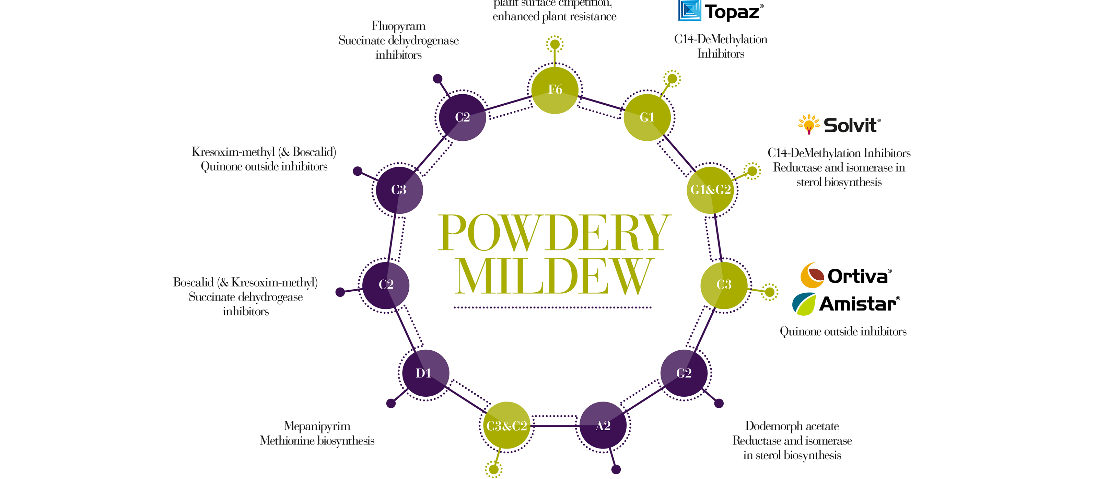Insecticide resistance: guide to the main insecticide modes of action
Going into more detail on insecticide resistance, below is a range of information to help you around the IRAC codes and their activity. For more advice on resistance management, check out our schemes here.

Nerve and muscle activity
IRAC groups 1, 3-6, 22, 28, 29
Insecticides that interfere with the pest’s nervous system or muscle action tend to do so by upsetting the way nerve impulses are transmitted, either between nerve cells or between nerves and muscles. Effects can be rapid and include uncoordinated movement or paralysis.
We often think of nerves as transmitting electrical signals but enzymes and other bits of complex biochemistry are key links in the chain which insecticides can target.
IRAC recognises 14 different mode-of-action groups for actives with nerve or muscle activity (not all include actives approved in the UK). Examples include avermectins such as Dynamec (in IRAC group 6), pyrethrins and spinosyns.
Dynamec acts where the pest’s nerve fibres meet the muscles, leading to behavioural changes which includes a stop to feeding and delayed egg-laying. Incidentally, avermectins were originally derived from a soil microbe, Streptomyces avermitilis.
Respiration and energy metabolism
IRAC groups 20, 21, 24, 25
Six main mode-of-action groups target various enzymes involved in the chemical reactions that convert nutrients into energy (not all include actives approved in the UK). Most of them affect the energy-producing bodies called mitochondria present in an insect’s cells.
Disruption of growth or development
IRAC groups 7, 10, 15, 16, 18, 23
Insects can’t grow, or develop from one life-stage to the next, unless they shed their hard exoskeleton and grow a new one. Six groups of insecticides mimic or block the hormones that control this moulting process, or disrupt the ability of the pest to make chitin, the exoskeleton’s key component.
Some chemicals that mimic these hormones work because applications are timed when the pest is at the wrong physiological stage to moult – often at immature stages in the life cycle. This mode of action can also makes the products relatively specific.
Examples include the biopesticide azadirachtin, derived from the neem tree, which mimics a juvenile-insect moulting hormone; and the benzoylureas (eg teflubenzuron and diflubenzuron) which inhibit chitin synthesis in larval stages, resulting in impaired egg-hatching or deformed exoskeletons.
Microbial or viral disruptors of insect gut membranes
IRAC groups 11, 31
One of the oldest biopesticides, Bacillus thuringiensis (there are various strains in a range of products) is a bacterium that, once ingested, produces toxins to attack the cells in the pest’s gut. This enables the bacterium to invade and spread within the pest’s body.
Resistance to certain B. thuringiensis strains or toxins has been recorded. IRAC says rotation between certain B. thuringiensis products may help resistance management but those aimed at different insect orders may be used together.
The granuloviruses used to control some moth species in orchards are also included in this classification.
Unknown or uncertain modes of action
IRAC groups with UN classification
This rather vague-sounding classification is actually an important one for ornamentals and is likely to become more so because it includes seven main types of biopesticides such as the insect-killing fungi Metarhizium anisopliae and Beauveria bassiana and fatty-acid-based products.
Seven groups within this classification reflect the biological origins of the product, such as fungi (UNF), bacteria (UNB) and plant extracts (UNE), but because the different ‘actives’ within these groups are not thought to share common target sites they can be freely used in programmes until further research or user experience suggests there are cross-resistance risks.

